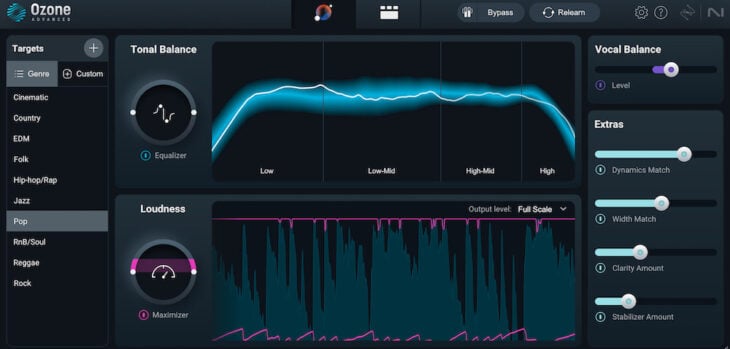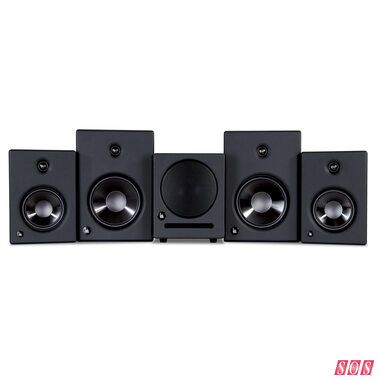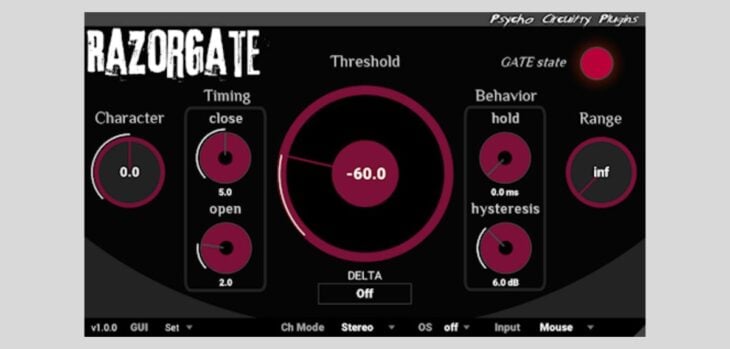Arturia Pigments 4 vs. Xfer Serum – Which is Best?
In the vast landscape of software synthesizers, two names stand out as beacons of innovation and boundless sonic possibilities: Arturia Pigments and Xfer Serum. These two powerful soft synths have garnered a dedicated following among sound designers and music producers, thanks to their extensive feature sets, exceptional sound quality, and intuitive interfaces. In this review …
The post Arturia Pigments 4 vs. Xfer Serum – Which is Best? appeared first on Beat Production.

https://beatproduction.net/
In the vast landscape of software synthesizers, two names stand out as beacons of innovation and boundless sonic possibilities: Arturia Pigments and Xfer Serum. These two powerful soft synths have garnered a dedicated following among sound designers and music producers, thanks to their extensive feature sets, exceptional sound quality, and intuitive interfaces. In this review article, we will embark on a deep dive into the captivating realms of Pigments and Serum, exploring their unique attributes, comparing their sound quality, versatility, ease of use, and ultimately determining which synth reigns supreme.
Note: this article may include affiliate links, meaning I receive a portion of the sale price, at no cost to you.
Arturia Pigments: Unleash Your Sonic Imagination
Arturia’s Pigments has emerged as a powerhouse in the world of soft synths, captivating users with its innovative features and visually appealing interface. Pigments combines wavetable and virtual analog synthesis, offering an array of sonic possibilities for sound designers and music producers. With its recent addition of granular synthesis capabilities, Pigments transcends traditional synthesis methods, enabling users to experiment with complex textures and ethereal soundscapes.
Over the past few months, Pigments 4 has become my “go to” synth for modern sounds.
One of the standout features of Pigments is its comprehensive wavetable engine, which offers a vast library of wavetables, including newly introduced ones. These wavetables serve as building blocks for crafting unique and dynamic sounds, from lush pads and evolving textures to aggressive leads and basslines. Pigments’ harmonics engine and virtual analog emulations provide warmth and character, allowing for the creation of rich and vibrant tones reminiscent of classic analog synths. I love the huge library of presets included with Pigments, and how easy they are to navigate.
See why Pigments 4 has nearly 2,000 five-star Reviews on Plugin Boutique
Another remarkable aspect of Pigments is its sampling engine, which allows users to import their own audio and transform it into wavetables. This feature opens up endless creative possibilities, as you can infuse your own sounds and recordings into Pigments’ sonic palette, further personalizing your compositions.
Furthermore, Pigments‘ modulation system is a playground for sound designers. It offers a robust modulation matrix, multiple LFOs, envelopes, and sequencers, allowing for intricate and evolving soundscapes. The ability to shape and modulate sounds with precision and depth makes Pigments a powerful tool for those seeking to push the boundaries of sonic exploration.
Arturia also offers a demo version of Pigments, allowing users to experience the synth’s capabilities without any financial commitment for 20 minutes. This serves as a fantastic opportunity for beginners and those on a tight budget to dive into the world of Pigments and unleash their sonic creativity.
With the latest version of Pigments 4, Arturia introduced a host of new features, including new synth engines, 63 new wavetables, a new version of its ms-20 filter, a super unison, and a smoother interface.
Xfer Serum: A Titan of Wavetable Synthesis
Xfer Serum, developed by acclaimed producer Steve Duda, has gained a cult-like following in the music production community. This wavetable synthesizer stands out for its exceptional sound quality, versatile modulation options, and intuitive interface, making it the most popular soft synth for EDM over the past few years.
At the heart of Serum lies its powerful wavetable engine. With a vast library of built-in wavetables and the ability to import custom wavetables, Serum offers an expansive sonic palette. The wavetable oscillator allows for seamless blending between different wavetables, resulting in unique and complex timbres. Whether you seek smooth, evolving pads or gritty, aggressive leads, Serum’s wavetable capabilities have you covered.
Serum’s modulation system is another strength, providing an extensive range of options to shape and animate sounds. With its intuitive drag-and-drop interface, users can effortlessly assign modulation sources to various parameters, creating intricate and dynamic patches. Additionally, Serum offers MPE (Multidimensional Polyphonic Expression) support, allowing for expressive control over individual notes when using MPE-enabled controllers.
It’s no surprise the Serum has a rating of 4.5 stars. Click here to read more reviews
The user-friendly design of Serum facilitates a streamlined workflow, making it accessible to both newcomers and experienced sound designers. Its clean and intuitive interface allows users to navigate through its features with ease, and its visual representation of wavetables makes it effortless to manipulate and shape sounds.
A key aspect of Serum’s success is its thriving user community, which contributes to its vast library of presets and user-created content. This wealth of resources further expands Serum’s sonic capabilities, providing inspiration and ready-to-use sounds for immediate music production.
The big downside is that Serum is starting to show its age, while Pigments 4 feels totally fresh, clean and modern.
Sound Quality: Unleashing the Sonic Beast
When it comes to sound quality, both Pigments and Serum deliver exceptional results, each with its own unique character and sonic flavor.
Arturia Pigments captures the essence of classic analog synths while incorporating modern features. The harmonics engine and virtual analog emulations produce rich and dynamic sounds that breathe life into your compositions. Whether you desire warm and lush pads, aggressive basslines, or searing leads, Pigments offers an extensive range of sonic possibilities.
It also excels at modern sounds great for hip hop, pop, and EDM.
Xfer Serum, known for its pristine sound quality, exhibits meticulous attention to detail. The complex modulation capabilities and phase modulation options result in a wide range of expressive and organic tones. Serum’s crystal-clear sound and precise control make it a favorite among producers who seek clarity and definition in their productions.
Truth be told, they both sound great.
Versatility: Unleashing Endless Sonic Exploration
Both Pigments and Serum shine in terms of versatility, providing a vast array of sonic tools to fuel your creative endeavors, though I give Pigments 4 the edge thanks to all of the new features that have been added.
Arturia Pigments’ granular synthesis capabilities open up a world of possibilities. By manipulating audio at the microscopic level, Pigments allows you to create intricate textures, ethereal atmospheres, and otherworldly soundscapes. The ability to transform your own samples into wavetables adds a personal touch, enabling you to infuse your own sonic identity into your compositions.
Serum’s powerful wavetable engine and extensive modulation options offer unparalleled flexibility. Whether you’re producing EDM, cinematic soundtracks, or experimental music, Serum adapts to your creative vision. From West Coast-inspired leads to classic analog-style basslines, Serum allows you to shape and sculpt sounds to match your artistic intentions.
If I was only interested in EDM, I’d probably choose Serum. For everyone else, Pigments is the more versatile choice.
Ease of Use: Unleashing Seamless Workflow
Arturia Pigments’ clean interface and intuitive modulation system make it an excellent choice for both beginners and experienced sound designers. The well-organized signal chain and intuitive design enable users to focus on shaping their sounds without feeling overwhelmed. Pigments’ user-friendly approach ensures a seamless workflow, allowing for effortless exploration of its vast sonic capabilities.
Xfer Serum, while initially more complex, rewards those willing to invest time in learning its intricacies. Once mastered, Serum becomes an extension of your creative vision, enabling you to craft sounds with precision and ease. Its intuitive interface, drag-and-drop modulation system, and visual representation of wavetables facilitate smooth navigation and experimentation.
Conclusion: A Sonic Odyssey Awaits
In the ultimate battle of Arturia Pigments vs. Xfer Serum, both synths showcase their unique strengths and capabilities. Arturia Pigments stands out with its granular synthesis, harmonics engine, and intuitive interface, making it an excellent choice for sound designers and musicians seeking sonic exploration. Xfer Serum, on the other hand, shines with its exceptional sound quality, versatile wavetable engine, and intuitive modulation options, making it a go-to synth for producers across genres.
Ultimately, the choice between Pigments and Serum depends on your personal preference, desired sound aesthetic, and creative goals. Whichever path you choose, rest assured that both synths will take you on a captivating sonic journey. So unleash your sonic imagination, experiment with a plethora of presets, and let the captivating sounds of Pigments and Serum transport your music to new heights. The world of synthesis awaits your exploration—embrace the sonic odyssey!
The post Arturia Pigments 4 vs. Xfer Serum – Which is Best? appeared first on Beat Production.
This is a syndicated post. To read more, click the source link above.





